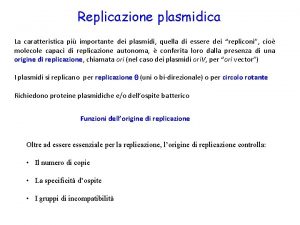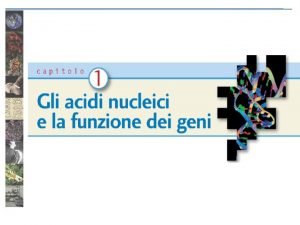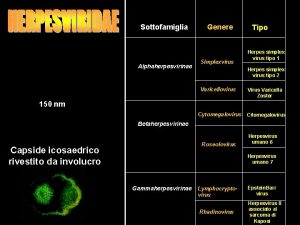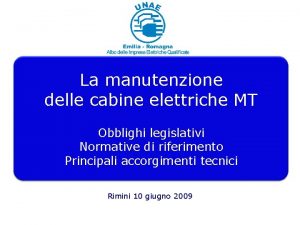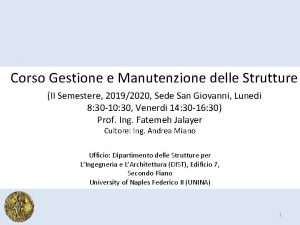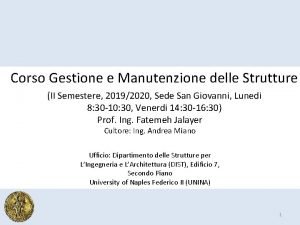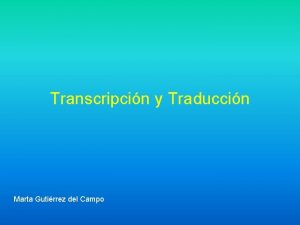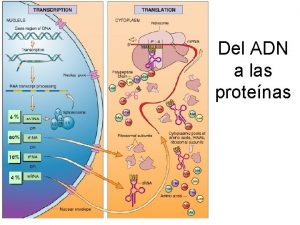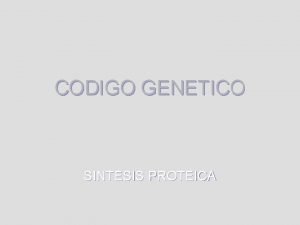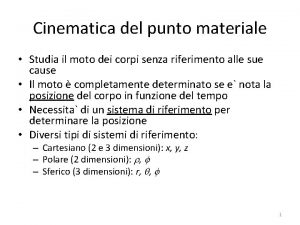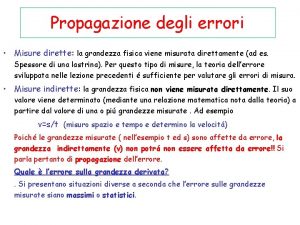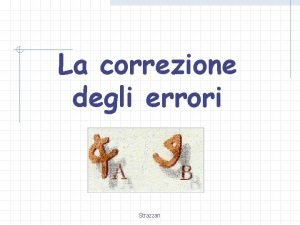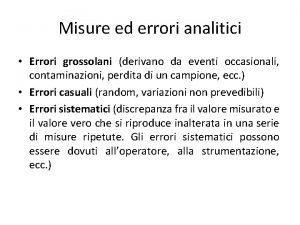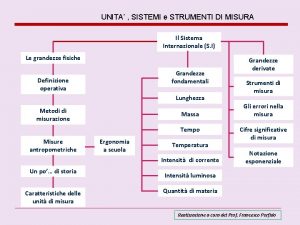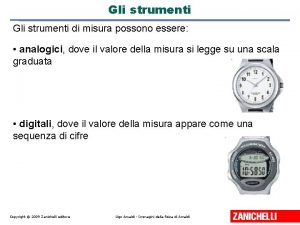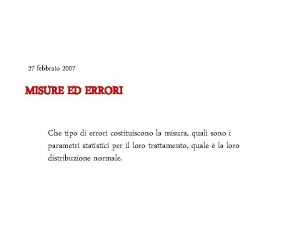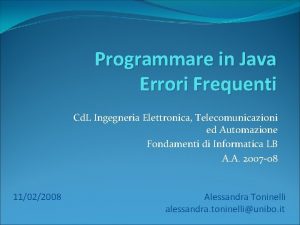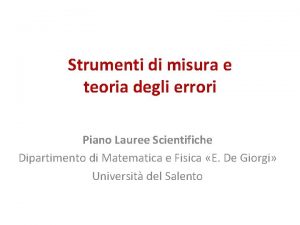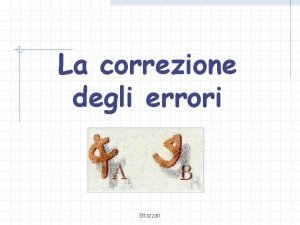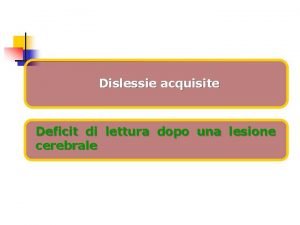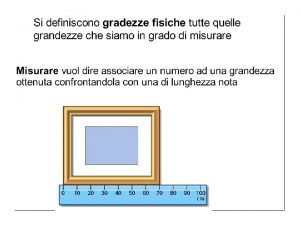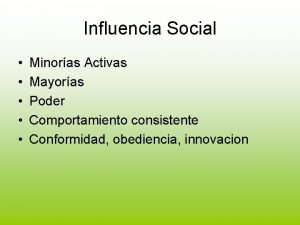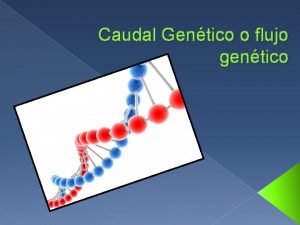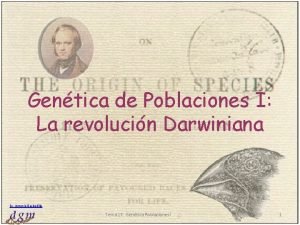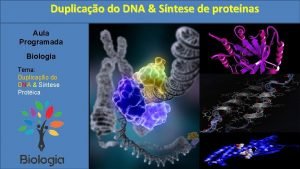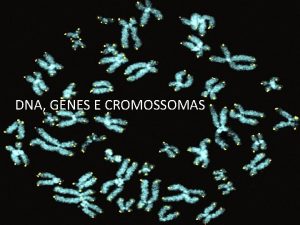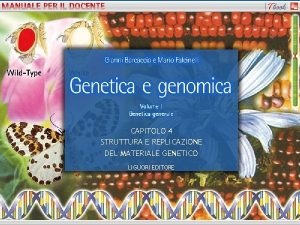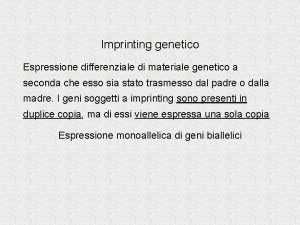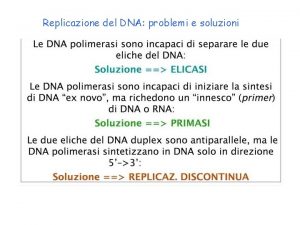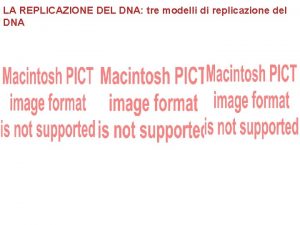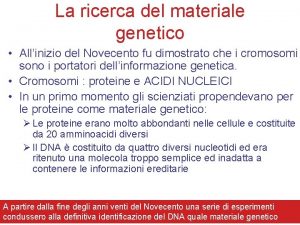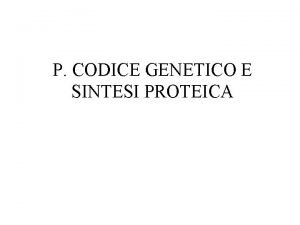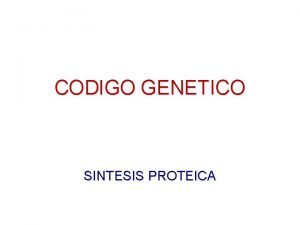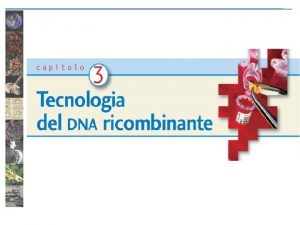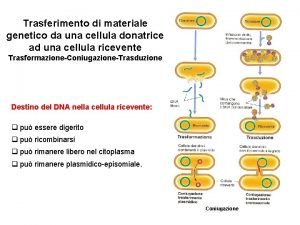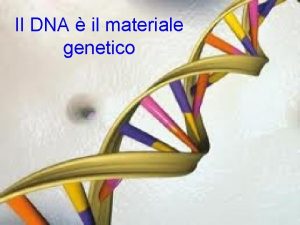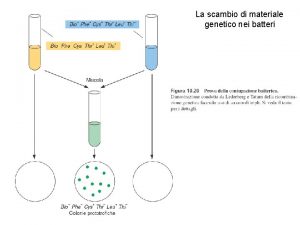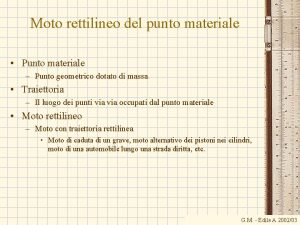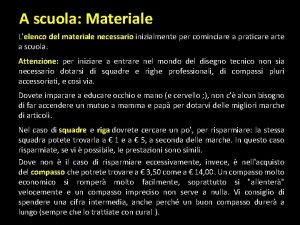Errori di Replicazione La manutenzione del materiale genetico





























- Slides: 29

Errori di Replicazione

La manutenzione del materiale genetico

Figure 5 -20 a Molecular Biology of the Cell (© Garland Science 2008)

Danni al DNA depurinazione

Figure 5 -45 Molecular Biology of the Cell (© Garland Science 2008)

Figure 5 -47 Molecular Biology of the Cell (© Garland Science 2008)

Figure 5 -48 a Molecular Biology of the Cell (© Garland Science 2008)

Figure 5 -46 Molecular Biology of the Cell (© Garland Science 2008)

Figure 5 -48 b Molecular Biology of the Cell (© Garland Science 2008)



Xeroderma pigmentosum

Figure 5 -51 Molecular Biology of the Cell (© Garland Science 2008)

UNIONE NON OMOLOGA DELLE ESTREMITA’ Figure 5 -52 a Molecular Biology of the Cell (© Garland Science 2008)

RIPARAZIONE OMOLOGA DI “DOUBLE STRAND-BREAKS” Figure 5 -59 (part 1 of 2) Molecular Biology of the Cell (© Garland Science 2008)

Invasione del filamento Rec. A/RAD 51 Figure 5 -56 Molecular Biology of the Cell (© Garland Science 2008)

Figure 5 -59 (part 2 of 2) Molecular Biology of the Cell (© Garland Science 2008)

GIUNZIONI DI HOLLIDAY Figure 5 -61 Molecular Biology of the Cell (© Garland Science 2008)

MIGRAZIONE DELLA GIUNZIONE: PROTEINE Ruv A/B

RISOLUZIONE DELLA GIUNZIONE: Ruv C

RIPARAZIONE OMOLOGA DI FORCELLE INTERROTTE Figure 5 -53 (part 1 of 2) Molecular Biology of the Cell (© Garland Science 2008)

Figure 5 -53 (part 2 of 2) Molecular Biology of the Cell (© Garland Science 2008)

RICOMBINAZIONE OMOLOGA IN MEIOSI Rad 51 Figure 5 -64 (part 1 of 2) Molecular Biology of the Cell (© Garland Science 2008)


MEIOSI Figure 5 -63 Molecular Biology of the Cell (© Garland Science 2008)



Sensori del Danno al DNA e Malattie Genetiche DNA glicosilasi (Escissione di basi-BER) Sensori diretti RPA-XPC (Global Genome Repair via Escissione di nucleotidi-NER) ATM-ATR-Ku 70/80 Rotture a doppio filamento del DNA (Riparo per ricombinazione) Sensori indiretti RNA polimerasi II/TFIIH (Transcription-Coupled Repair via Escissione di nucleotidi-NER) Xeroderma pigmentosum (gr. A e gr. C) Ataxia-telangectasia

Effettori/Mediatori del Riparo e Malattie Genetiche Escissione di nucleotidi-NER XPB-XPD (subunità di TFIIH) XPF-XPG (nucleasi) XPE? Riparo per ricombinazione BRCA-2 Xeroderma pigmentosum (gr. B, D, F, G) Forme genetiche di cancro della mammella
 Replicazione rolling circle
Replicazione rolling circle Replicazione a circolo rotante
Replicazione a circolo rotante Codice genetico ridondante e degenerato
Codice genetico ridondante e degenerato Replicazione a cerchio rotante
Replicazione a cerchio rotante Obbligo manutenzione cabine elettriche
Obbligo manutenzione cabine elettriche Manutenzione
Manutenzione Esempio piano di manutenzione delle strutture ntc 2018 doc
Esempio piano di manutenzione delle strutture ntc 2018 doc Poros nucleares
Poros nucleares Genes constitutivos y facultativos
Genes constitutivos y facultativos Características del codigo genetico
Características del codigo genetico Estructura del material genético
Estructura del material genético Esempi moto armonico
Esempi moto armonico Formulario errori fisica
Formulario errori fisica Errori morfosintattici
Errori morfosintattici Illud in his rebus vereor metrica
Illud in his rebus vereor metrica Errori grossolani
Errori grossolani Mappa concettuale errori di misura
Mappa concettuale errori di misura Strumenti analogici e digitali esempi
Strumenti analogici e digitali esempi Misure ed errori
Misure ed errori Errori ingegneria
Errori ingegneria Sensibilità di un termometro clinico
Sensibilità di un termometro clinico Errori morfologici
Errori morfologici Dislessie
Dislessie Errori accidentali
Errori accidentali Modelo funcionalista de influencia social
Modelo funcionalista de influencia social Caudal genetico
Caudal genetico Que es un acervo genetico
Que es un acervo genetico Desviacion del apareamiento aleatorio
Desviacion del apareamiento aleatorio Uracila se liga com quem
Uracila se liga com quem Localização do material genetico
Localização do material genetico

